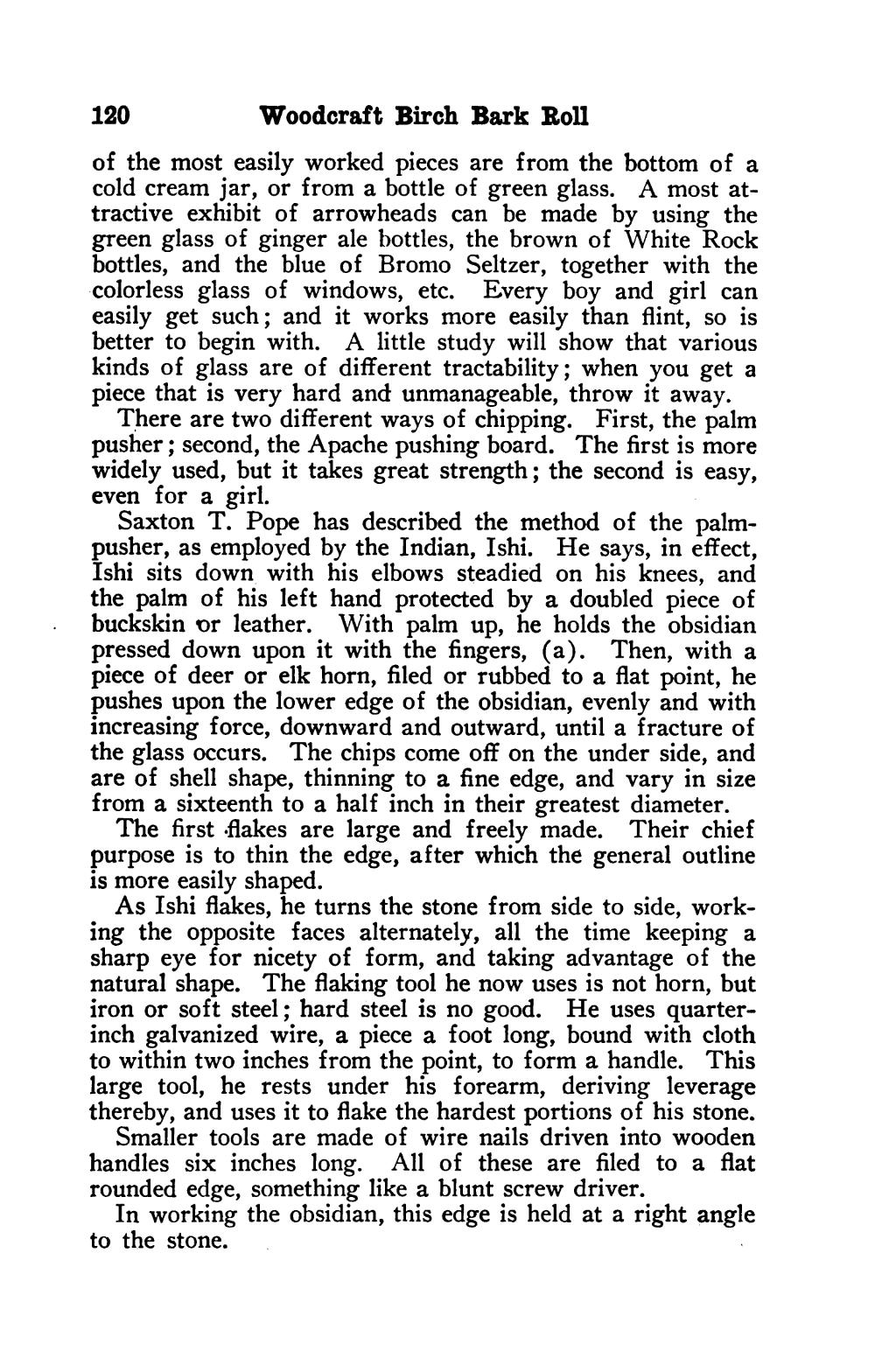120 Woodcraft Birch Bark Roll of the most easily worked pieces are from the bottom of a cold cream jar, or from a bottle of green glass. A most at- tractive exhibit of arrowheads can be made by using the green glass of ginger ale bottles, the brown of White Rock bottles, and the blue of Bromo Seltzer, together with the colorless glass of windows, etc. Every boy and girl can easily get such; and it works more easily than flint, so is better to begin with. A little study will show that various kinds of glass are of different tractability; when you get a piece that is very hard and unmanageable, throw it away. There are two different ways of chipping. First, the palm pusher ; second, the Apache pushing board. The first is more widely used, but it takes great strength; the second is easy, even for a ‘girl, Saxton T. Pope has described the method of the palm- pusher, as employ ved by the Indian, Ishi. He says, in effect, Ishi sits down with his elbows steadied on his knees, and the palm of his left hand protected by a doubled piece of buckskin or leather. With palm up, he holds the obsidian pressed down upon it with the fingers, (a). Then, with a piece of deer or elk horn, filed or rubbed to a flat point, he pushes upon the lower edge of the obsidian, evenly and with increasing force, downward and outward, until a fracture of the glass occurs. The chips come off on the under side, and are of shell shape, thinning to a fine edge, and vary in size from a sixteenth to a half inch in their greatest diameter. The first flakes are large and freely made. Their chief purpose is to thin the edge, after which the general outline is more easily shaped. As Ishi flakes, he turns the stone from side to side, work- ing the opposite faces alternately, all the time keeping a sharp eye for nicety of form, and taking advantage of the natural shape. The flaking tool he now uses is not horn, but iron or soft steel; hard steel is no good. He uses quarter- inch galvanized wire, a piece a foot long, bound with cloth to within two inches from the point, to form a handle. This large tool, he rests under his forearm, deriving leverage thereby, and uses it to flake the hardest portions of his stone. Smaller tools are made of wire nails driven into wooden handles six inches long. All of these are filed to a flat rounded edge, something like a blunt screw driver. In working the obsidian, this edge is held at a right angle to the stone.
Stránka:roll 1931.djvu/136
Z thewoodcraft.org
Tato stránka nebyla zkontrolována
